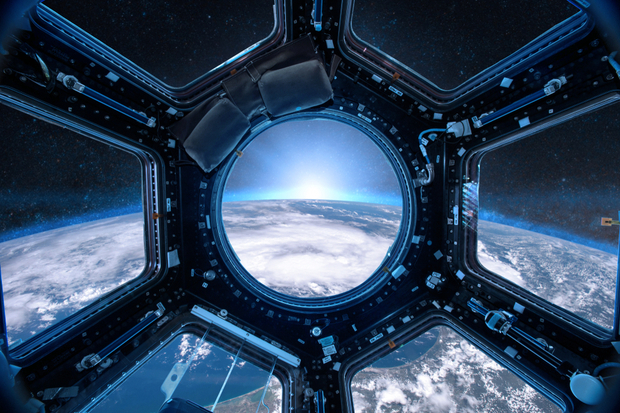Space Radiation May Kill You, But Your Mold Will Live On

BELLEVUE, Wash. — Mold can be nasty when you find it on your walls, your food, or you know, up in the International Space Station (ISS). Now, a new study suggests that mold is incredibly resilient to space radiation and can survive hundreds of times the dose that would kill a person.
Mold reproduces through spores. Typically, these spores aren't harmful, but breathing in high doses of them can be, especially for someone who's sick or has a compromised immune system, said Marta Cortesão, a doctoral student in space microbiology at the German Aerospace Center in Cologne, who led the research.
What's more, mold can also pose a contamination risk to other planets. "If spores resist the space environment and high radiation," they might be able to resist space travel to various places, Cortesão said. "So it's important to see how this mold is growing in space both inside the ISS and outside."
Cortesão and her team exposed various strains of a species of mold called Aspergillus — which was one of the most common species found on the ISS — to various kinds and doses of radiation in the lab that mold might be exposed to while on a journey to planets such as Mars. (Our atmosphere shields us from much of the radiation that comes from sources such as the sun or remnants of stars and supernovas).
They put mold spores in petri dishes and then hit them with UV radiation, X-rays and heavy ions; then, they counted the number of living spores left in the dishes.
"They were way more resistant than what we thought they would be," Cortesão told Live Science. They survived X-ray radiation of up to 1,000 gray (absorption of one joule of radiation energy per kilogram of matter) and heavy ions of up to 500 gray. In comparison, 5 gray would likely kill a person, she said. Though "humans are really bad at being resistant to anything," she added.
Since a trip to Mars would expose mold to around 0.7 gray, they would likely survive it, she said. But this might not be a terrible thing. Since we now know that mold can survive space radiation, maybe we can bring them to new places in the cosmos to make antibiotics or vitamins, she added.
Sign up for the Live Science daily newsletter now
Get the world’s most fascinating discoveries delivered straight to your inbox.
There are other microbes besides mold that would also come along for the ride. "It's very hard not to contaminate [other planets]; microbes are everywhere," she said. Even so, there are strict measures in place to clean spacecraft of microbes, she added. But mold wasn't necessarily on anyone's radar.
Now, Cortesão and her team hope to understand how mold grows and survives under various other conditions of spaceflight such as a change in gravity.
She presented the research today (June 28) here at the Astrobiology Science Conference. It is not yet published in a peer-reviewed journal.
- Tiny & Nasty: Images of Things That Make Us Sick
- 7 Everyday Things That Happen Strangely in Space
- Interstellar Space Travel: 7 Futuristic Spacecraft to Explore the Cosmos
Originally published on Live Science.

Yasemin is a staff writer at Live Science, covering health, neuroscience and biology. Her work has appeared in Scientific American, Science and the San Jose Mercury News. She has a bachelor's degree in biomedical engineering from the University of Connecticut and a graduate certificate in science communication from the University of California, Santa Cruz.










